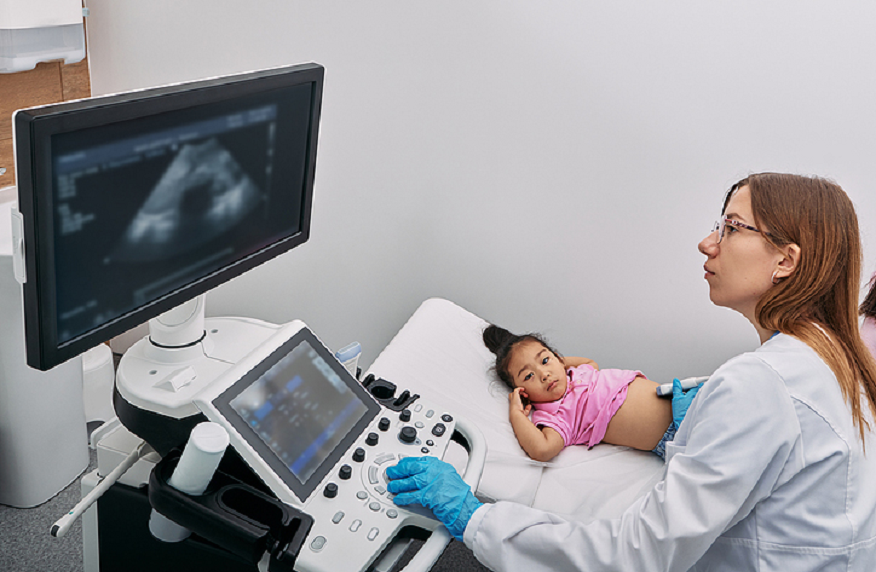In the intricate tapestry of medical advancements, few innovations have reshaped the landscape of healthcare as profoundly as diagnostic medical imaging. Offering a window into the hidden realms of the human body, these imaging services have transformed the way medical professionals diagnose, treat, and monitor diseases. Below, letsexplore the myriad benefits of diagnostic medical imaging services, each highlighting its indispensable role in contemporary medicine. Let’s embark on this journey, shining a light on the transformative power of seeing what was once unseen.
- Enhanced Accuracy in Diagnoses: The cornerstone of effective medical treatment is an accurate diagnosis. Diagnostic medical imaging stands as a testament to this, revolutionizing the medical world by offering precise pictures of what’s happening inside a patient’s body. Traditional methods, which were reliant on external examinations and symptom assessments, were riddled with uncertainties. With imaging techniques like MRI, CT scans, and X-rays, clinicians can visualize intricate details of body structures, including bones, muscles, organs, and even blood vessels. This newfound accuracy reduces diagnostic errors and ensures patients receive the correct treatment promptly.
- Minimally Invasive and Non-invasive Options: One of the most remarkable advantages of diagnostic imaging is its non-invasive nature. Techniques like ultrasound and MRI do not involve any surgical procedures or incisions. Patients can be evaluated without the pain, risks, and recovery time associated with invasive diagnostics. Even when contrast agents are needed for clearer images, the invasiveness remains minimal. This means fewer complications, reduced anxiety for the patient, and quicker evaluations, which in turn leads to faster treatment implementation.
- Early Detection of Diseases: The earlier a disease is detected, the better the outcomes. Diagnostic imaging has the capability to uncover abnormalities and conditions in their nascent stages, even before symptoms manifest. This early detection is crucial for diseases like cancer, where timely intervention can be the difference between full recovery and advanced-stage complications. Mammograms, for instance, can detect breast cancer years before physical symptoms arise, allowing for treatments that are less aggressive and more effective.
- Reduction in Unnecessary Surgical Procedures: Before the dawn of advanced imaging, exploratory surgeries were often performed to diagnose certain conditions. These surgeries came with risks of complications, extended hospital stays, and significant costs. Diagnostic imaging has reduced the need for many of these procedures. Instead of opening a patient up, doctors can now look inside with imaging, ensuring that surgeries are only performed when truly necessary and with a clear plan of action.
- Guided Treatment Planning:Beyond diagnosis, medical imaging serves as a valuable tool during the treatment phase. Whether it’s planning a surgical approach or monitoring the response to chemotherapy, imaging provides real-time feedback. For instance, radiation therapy for cancer patients relies on imaging to ensure that the right amount of radiation hits the target tumor, minimizing damage to surrounding healthy tissues.
- Cost-Effective Healthcare: Reducing the need for invasive diagnostics and unnecessary surgeries doesn’t just benefit the patient’s health; it also results in significant cost savings. Earlier diagnoses mean less expensive treatments in many cases. Also, by preventing potential complications from invasive procedures, medical imaging helps in reducing long-term healthcare costs. In a world where healthcare affordability is a significant concern, diagnostic imaging offers a more cost-effective approach to patient care.
- Improved Patient Comfort and Experience:Patient comfort is central to healthcare. Many diagnostic imaging techniques are painless and quick. Patients don’t need to be admitted or undergo lengthy preparations. An ultrasound, for example, is a relatively comfortable procedure that can be done in an outpatient setting. The anxiety surrounding unknown health issues can be overwhelming; getting answers quickly through imaging greatly alleviates that stress.
- Ongoing Monitoring with Safety: Certain conditions require ongoing monitoring. Diagnostic imaging facilitates this without repeatedly exposing patients to invasive procedures. Moreover, many imaging modalities, like MRI and ultrasound, don’t use ionizing radiation, making them safe for repeated use. This safety profile ensures that doctors can track the progress of a condition or the effectiveness of a treatment regimen without compromising patient health.
- Comprehensive Visualization: Some conditions or injuries involve multiple body structures. Diagnostic imaging offers a comprehensive view, allowing doctors to assess the extent of diseases or injuries accurately. For instance, a traumatic injury might affect bones, muscles, and blood vessels. With CT or MRI, clinicians can evaluate the full scope of the injury, ensuring nothing is overlooked.
- Facilitating Research and Advancements: Diagnostic medical imaging isn’t just for today’s patients; it’s also shaping the future of medicine. Medical researchers rely on these technologies to understand diseases better and develop new treatments. By visualizing disease progression and the effects of novel treatments, medical imaging accelerates the pace of innovation in medicine, promising a brighter, healthier future for all.
- Improved Interdisciplinary Collaboration: The comprehensive results that diagnostic medical imaging produces play a pivotal role in fostering collaboration between different medical disciplines. For instance, a radiologist might spot an anomaly in an MRI, which then requires the combined expertise of neurologists, surgeons, and oncologists. Having a clear, visual representation of the issue ensures that all professionals involved are on the same page, leading to a cohesive and coordinated approach to patient care. This synergy often results in more holistic treatment plans tailored to individual patient needs.
- Empowering Patients with Information: A well-informed patient is an empowered one. Diagnostic medical imaging provides patients with tangible, visual evidence of their medical conditions. This visual proof can help in understanding the nature and severity of their health issues better, leading to informed decisions about treatments, procedures, and lifestyle changes. When patients can see and comprehend what’s happening inside their bodies, it fosters a deeper engagement in their health and well-being, making them active participants in their care journey.
- Reducing Hospital Admissions: Quick and precise diagnostic processes often mean that patients don’t need to be admitted to the hospital for extended periods. This not only saves on healthcare costs but also reduces the strain on hospital resources and decreases the patient’s exposure to potential hospital-acquired infections. Outpatient imaging services ensure that beds are available for those in dire need, optimizing healthcare facility operations.
The ever-evolving landscape of diagnostic medical imaging services in USAis a testament to its unmatched benefits in the realm of healthcare. As technology and medical practices progress, the applications and advantages of imaging will continue to expand, underlining its crucial role in shaping a healthier and more informed world.





